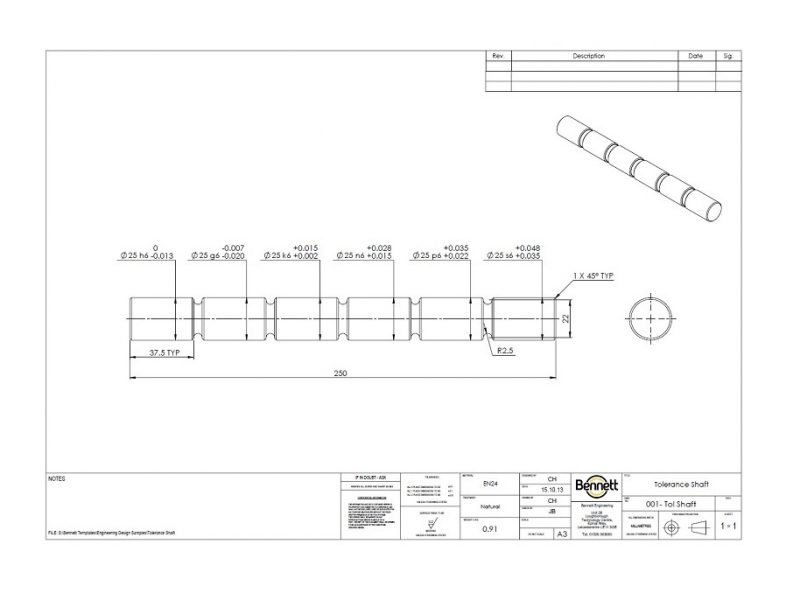What’s the big deal on tolerances?
There’s one thing you need to be clear on when you approach any mechanical design project and it’s this:
Getting your tolerances spot on is not just good practise it’s essential for the success of the project.
A dimension without a tolerance assumes a non-critical dimension. This is OK if that’s really the case. It’s highly unlikely that your dimension’s aren’t critical it’s far more likely that things need to fit together precisely.
Here’s why
You’ve got a design with lots of complexity, you’re modelled it and produced manufacturing drawings.
These get sent to the various manufacturers of your ‘parts’ to be custom made against your specification.
Everything is made and you receive lots of parcels or a delivery on a pallet.
As you begin to build something doesn’t fit correctly. And here’s why; that thousandth of an inch you see when you reach for your Vernier calliper after the parts would not go together has made a difference!
The diameters might be visually spot on for holes and shafts and you might be able to easily slide them together.
Whatever the specification is in your manufacturing drawings, and if there’s not exact numbers for your dimensions then standard holes or sizes could be used by the manufacturer, has been made.
A limit
If you supply a dimension on your manufacturing drawings of between 0.630 and 0.638 then this it is the tolerance limit. You’ll have specified that limit because of it’s the control for a desired fit; be it a sliding fit, or a press fit.
If your part falls outside of that specified dimension then it’s not within the tolerance band so could be rejected providing you have provided the tolerances. Similarly if you don’t specify that tolerance band for your required dimension then you are not highlighting the importance to the manufacturer.
Put simply your tolerance is the minimum and maximum of allowable dimensions. It’s leaving nothing to guess work or standard dimensions.
And so to the importance
With parts made to tolerances you are saving yourself future frustrations and costs.
You’ll only save money if your tolerances are correct though. Over specify and your part could become very expensive to make.
A correct tolerance means easier to assemble multiple parts.
Specifying a tolerance means the manufacturer takes on the liability for getting the dimensions spot on.
Using tolerances for clearance could mean a better fit for sliding parts for example or those metal parts that will heat up when in operation.
You’ll save time on not having to get a part reworked or totally remade if you specify the correct tolerance in your manufacturing drawings.
Approaching every design engineering project with tolerances fully considered and specified means you’re more likely to have greater success when it comes to the build and operation. Tolerances will save you time, money and more importantly headaches from frustrations.


